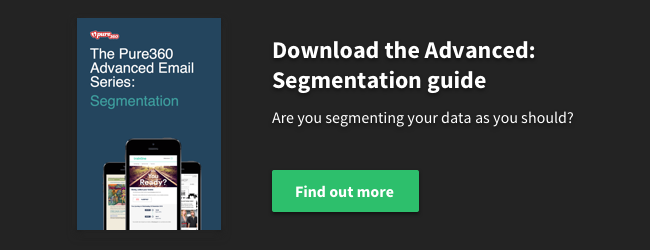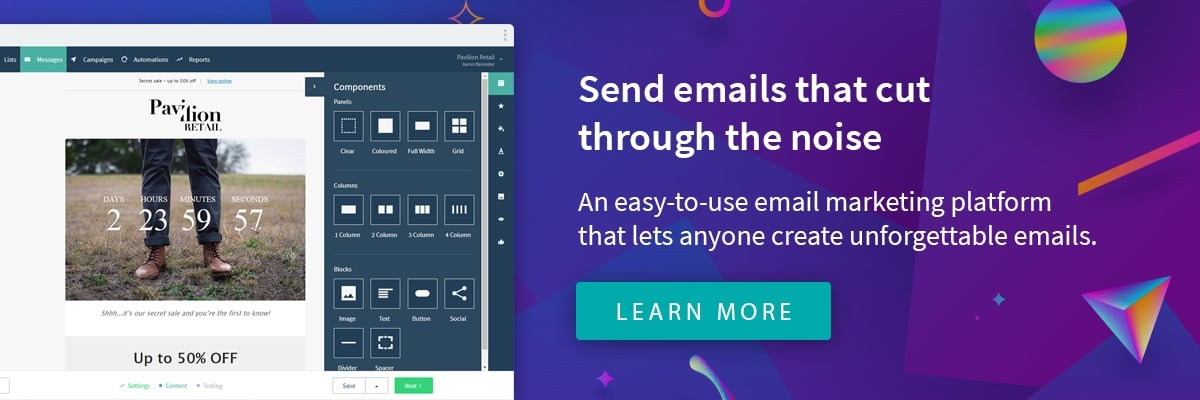Email segmentation might seem like an entry-level strategy for veteran email marketers but you’d be surprised at how many marketers overlook the tactic in their own campaigns. It is all well and good persuading subscribers to share their email address with you but if you’re not segmenting your email address lists, you’re not optimising your email marketing campaigns to their full potential.
For those at the back unaware of the benefits of segmentation, here’s a run down on some the positives it can bring to your email marketing strategy.
Why segment your email lists?
Segmentation is the difference between blasting mass messages to a whole email lists versus mailing targeted emails to smaller groups. The merits of this are clear: messages that are custom-tailored to a customer’s preferences, past activities, location and other variables are much more likely to be attractive to a consumer over a mass mail that makes customers feel a number on a company’s email list. The fact is, there is no one-size-fits-all type of customer regardless of the products you’re selling; there will always be people at different stages of the buying cycle and sending all of your contacts the same message is counter-intuitive.
To counter this move, marketers can segment their lists in a number of ways depending on the amount of information offered by customers during initial sign-up (if you don’t want to bombard customers with a list of questions during initial sign-up, you can always message them a survey at a later date). This can range from gender, age, income, employment status, geographic location, interests, relationship status and a huge number of other variables.
Geographic location can be a great variable from which to segment your lists. Tailoring messages to local events (eg. a football match happening in the local area, a farmer’s market taking place across a weekend etc.) is a great way to turn your email marketing campaign into a compelling, targeted operation.
The benefits of email segmentation
Naturally, segmentation of your email marketing lists comes with a number of benefits that email marketers will be over the moon about.
With segmentation, you’re very likely to increase sales and engagement levels with your customers. For example, if a geographical location is about to experience a week-long rainstorm, would it not make sense to email your customers in that area offering discounts on umbrellas, waterproof jackets and other items to keep them dry? If you’re having a sale on gold earrings, would it not make sense to email your female customers over your male ones? Targeting your customers based on their preferences can help with engagement and deliver a better understanding of their wants and needs from your business.
Treating your customer as more than just a number is a great way to keep their custom. It engages customers on a personal level and makes the customer feel ‘special’. On a customer level if a firm knows our interests and idiosyncrasies, we’re much more likely to be receptive to their messaging. Marketers can also observe buyer behaviour and send fewer emails regarding a subject if a customer doesn’t respond positively to previous emails. From a customer perspective, it’s like having a digital friend that always wants to talk about stuff we like.
The act of segmentation means you might not be sending as many emails to all demographics as before but this is a good thing; when businesses email too frequently, they regularly run the risk of being marked as spam by recipients. By sending fewer – but more relevant – emails, email marketers increase the value of their messaging while decreasing the risk of being sent on a one-way trip to the delete folder.
Email segmentation statistics
Figures suggests that 39 per cent of respondents to their survey indicated 39 per cent experienced higher open rates when using segmentation strategies. Furthermore, 28 per cent experienced lower unsubscribe rates and 24 per cent experienced better deliverability, increased sales leads and greater revenue.
Furthermore, research from Hubspot suggests targeted and segmented lead nurturing emails generate an eight per cent click-through rate compared to general email sends, which generated just a three per cent click-through rate. In layman’s terms, segmentation equals more clicks.
If you’re still not convinced, Jupiter Research will blow your mind. Statistics from the analyst revealed emails drive 18 times more revenue than broadcast emails.
Overall the benefits of segmentation are clear to see. IT helps email marketers effectively target their emails and deliver a feeling of personalisation to customers that helps produce more engagement and clicks. Whether you’re a rookie learning the trade or a veteran of the email marketing industry, segmentation will always be a must-have tool.


